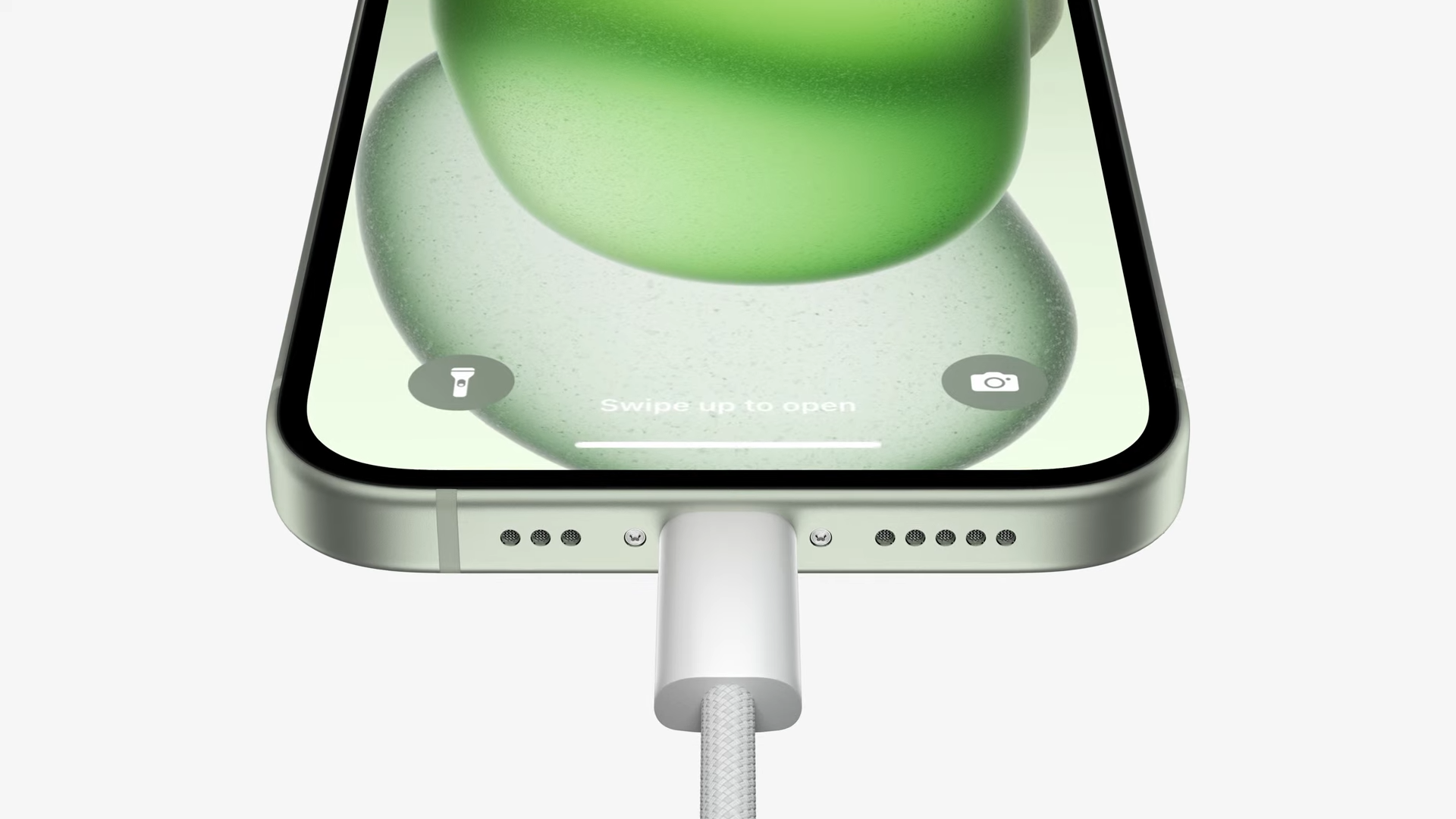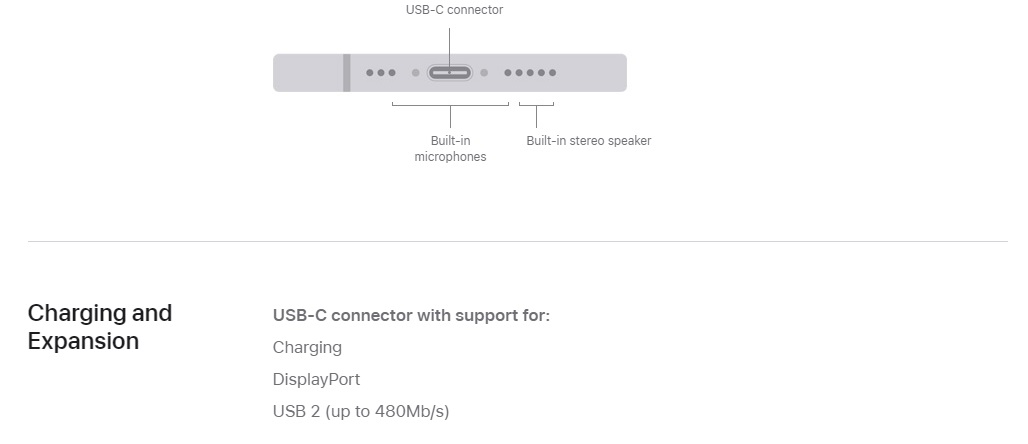Apple finally put USB-C in the new iPhone, and now we know why it's limited to 23-year-old USB 2.0 speeds
Apple has dragged the iPhone kicking and screaming into the USB-C era, but with an embarrassingly antiquated USB protocol.

Update, September 13, 2023: Digging into the details of the new Apple handsets, it turns out there is a reason why the regular iPhone 15's USB-C port runs at 2.0 speeds while the 15 Pro has a faster 3.0-spec interface: It's got an old chunk of silicon inside it.
That reason isn't simply to give buyers a reason to buy the pricier handset, though obviously isn't not wanted by Apple. The iPhone 15 Pro sports Apple's new A17 Pro APU, complete with a new on-die USB controller block. However, the vanilla iPhone 15 makes do with the last-gen A16 Bionic chip, which lacks that new USB controller and only has the original Lightning controller onboard.
Exactly how Apple is implementing USB on the cheaper handset isn't clear. However, the fact it's limited to USB 2.0 speeds, and that the legacy Lightning interface likewise tops out at the same 480Mbps, makes sense in the context of the absent USB controller. Very likely, there's some kind of conversion going on between the new USB-C connector and the old Lightning controller, limiting the former to the latter's peak bandwidth.
Original story, September 12, 2023: For the first time in its 16 year history, Apple is releasing an iPhone without a proprietary connector. Apple announced in a livestream today that the new iPhone 15 will launch with USB-C, ending the 11-year reign of its Lightning port (only half a decade or so after it probably should've made this move).
As Android phones, laptops, and all sorts of accessories have largely embraced USB-C over the last few years, Apple's been one of the last remaining holdouts. There's perhaps no more famous love story in tech than the romance between Apple and ports that require proprietary cables or pricey dongles.
The iPhone 15's switch to USB-C comes a year after the European Union ruled that starting in late 2024, new mobile devices are required to use the ubiquitous USB-C port. Apple could've avoided the requirement by dropping a physical port altogether in favor of wireless charging, but it's apparently not feeling quite that courageous about this year's phone upgrade.
It is, however, feeling courageous enough to sell a brand new smartphone that uses an antiquated, absurdly slow 23-year-old USB standard.
Keep up to date with the most important stories and the best deals, as picked by the PC Gamer team.
Apple didn't have much to say about the USB-C change in terms of specifics during its keynote, but it did confirm that it's releasing updated earbuds and Airpod Pros with USB-C ports. Later, while discussing the iPhone 15 Pro, Apple explained that a USB controller unique to the Pro's chip will allow for 10Gbps USB transfers—a big red flag for what it's offering in the basic phone model.
And sure enough, the full specs on Apple's website confirm some bad news about this upgrade to USB-C.
Apple's site indicates it will be offering a 20W USB-C charger (sold separately, of course)—slower than the common 25W charging used in Android phones. But the really bad news here is that the USB-C port on the iPhone 15 is still limited to USB 2.0, meaning it tops out at 480 Mbps transfer speeds. That's ridiculous for an $800 smartphone in the year 2023.

Apple has actually been shipping MacBooks and iPads with USB-C for years now, so it's had plenty of time to bring the iPhone up to par with the basic charging and transfer capabilities of other USB-C devices. But the iPhone has long been a holdout, sticking to its increasingly antiquated Lightning port. That has offered iPhone owners some benefits—if you bought a dock or a lifetime supply of cables years ago, you've gotten plenty of use out of them. But Lighting has become progressively outdated.
Since introducing it in 2012, Apple hasn't increased the iPhone's Lightning port bandwidth from a paltry 480Mbps transfer speed (the maximum of the old USB 2.0 protocol it relies on). USB-C, under the latest revision currently in use, has the ability to top out at 10 Gbps speeds.
It's fair to say that Lightning has been holding the iPhone back on both the data transfer and charging fronts for a long time now, but Apple's really cutting corners here by limiting the iPhone 15 to the ancient USB 2.0 protocol, and only including the vastly faster current USB 3 standard on the Pro model. If you want USB 3, get ready to pay up another $200.
The USB 2-capable iPhone 15 will be available on September 22 starting at $799; the USB 3-capable iPhone 15 Pro will be available the same day, starting at $999.

Wes has been covering games and hardware for more than 10 years, first at tech sites like The Wirecutter and Tested before joining the PC Gamer team in 2014. Wes plays a little bit of everything, but he'll always jump at the chance to cover emulation and Japanese games.
When he's not obsessively optimizing and re-optimizing a tangle of conveyor belts in Satisfactory (it's really becoming a problem), he's probably playing a 20-year-old Final Fantasy or some opaque ASCII roguelike. With a focus on writing and editing features, he seeks out personal stories and in-depth histories from the corners of PC gaming and its niche communities. 50% pizza by volume (deep dish, to be specific).
- Jeremy LairdHardware writer

